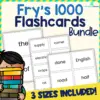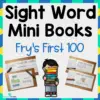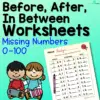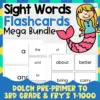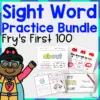Do your kids like pretending to be doctors and nurses? Encourage their creativity and critical thinking skills and put together a pretend hospital or clinic, complete with medical equipment, printables, and tools to carry out daily operations.
These 10 fun, learning-filled doctor activities are perfect for your kids.
Great Doctor Activities for Preschool
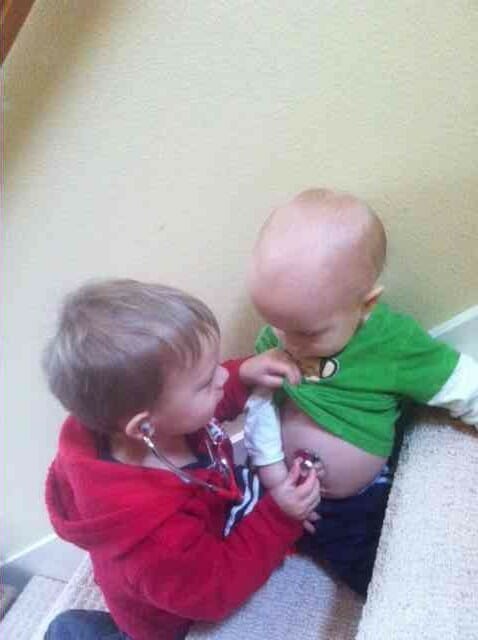
Children may have dreaded going to the doctor for checkups, but if you build up a dramatic play space for them to play in, they will undoubtedly change their minds.
Using a sizable cardboard box, create a reception area where the patients can check in, check out, pay their bills, or make an appointment. You may also cut out a handwashing area to complete the set.
Kids will have opportunities to practice writing names when they add their patients’ names to the sign-in sheet.
Children also develop their foundational math skills as they record the time the patient checks in or out.
Although you can set them up with other pieces of furniture from your home or in your classroom, the ideal option is to provide the kids with permanent stations that are ready when they return to play again.
Materials:
- Cardboard boxes
- Scissors
- Glue
- Tape
- Papers/printed sheets for signs
- Pens
For more information about this activity, be sure to check out the details available on CarrotsAreOrange.com
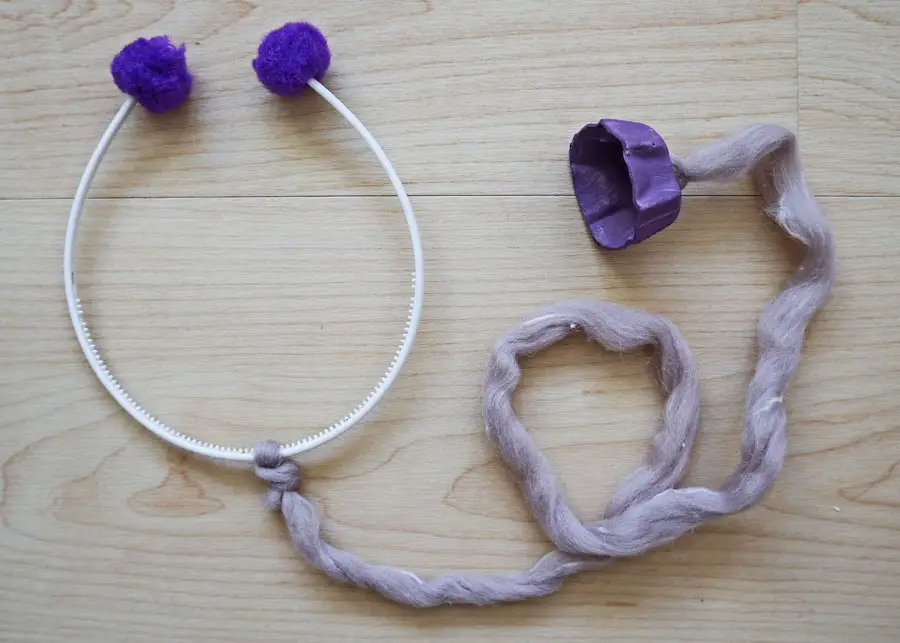
Pretend doctor games will never feel complete without the most common medical tool they use—the stethoscope. Doctors use stethoscopes to listen to internal sounds of the human body, such as breathing and heartbeat.
Putting together this stethoscope is incredibly fun and simple. This is definitely something you can do with the kids.
Materials:
- old headband
- two pompoms
- rope/string/wool/ribbon
- one cup from an egg carton
- paint and paintbrush
- hot glue
A more detailed set of instructions on making the Stethoscope can be found on DLTKl-Kids.com
Kids can play with this stethoscope for hours, but it’s also perfect for more structured activities.
Tell the kids to listen to and try to count the heartbeats of their family or their classmates. This is an excellent approach to teaching them to count and write numbers as they keep track of their heartbeats.
Another fun play activity is to allow kids to compare resting and active heartbeats. Let the kids listen to the heartbeat of a family member or a friend who is seated or standing still. Then ask the latter to perform 15 seconds of jumping jacks or running in place. After that, the kids can compare the heartbeats.
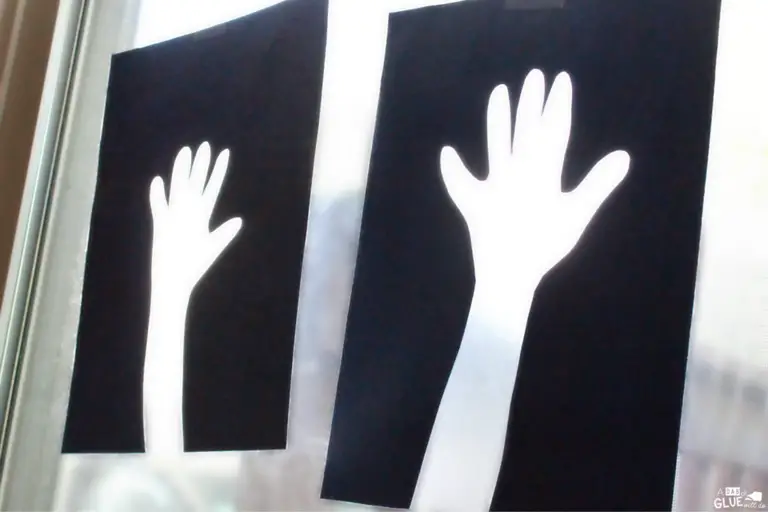
Looking at X-rays is a great way to introduce an enjoyable science lesson and encourage children’s fascination with the inner workings of the body. Real x-rays can be costly or hard to find. Why not create one then?
Gather up these supplies and let the fun crafting begin!
- Blue or black construction paper
- White crayons
- Clear contact paper
- Scissors
Each child should have a piece of construction paper and a white crayon. Have them place one hand on their paper and trace an outline with a crayon with the other.
The outlines should resemble a decent hand shape. Once done, have them cut the hand out following the drawn line.
After the kids have completed cutting, laminate the negative space that remains. To laminate, simply cut two contact paper sheets to fit the construction paper, remove the backing from each, then sandwich the construction paper between the sticky sides of the contact paper.
It’s showtime!
Display your DIY x-rays in a well-lit window to make them appear like real x-rays they may encounter at a doctor’s office.
Learn more about this activity at ADabofGlueWillDo.com.
RELATED: Letter X Preschool Crafts and Activities
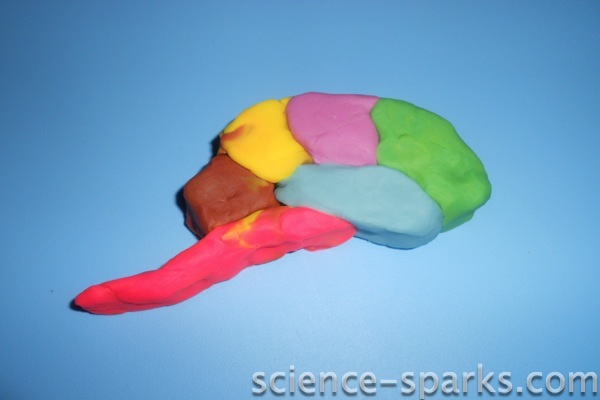
Discover the next generation of neuroscientists with this fun-filled project. Use this activity to start a conversation with your preschoolers about the human brain, its different lobes, and each one’s associated functions.
With this, you simply need to prepare six different colors of play dough to represent the various regions of the brain.
For labeling, you would need:
- Sticker papers
- Scissors
- Cocktail sticks
It can be challenging to replicate the shape of the brain, so give the youngsters a printed outline of the brain to use as a guide as they form the various components.
Once the brain models are done, let the kids make flag labels for each part. Give the kids sticker paper to copy or trace the names of the components, then have them adhere each label to a cocktail stick. Even though the spelling is difficult for their age, this would be a fantastic opportunity to train the kids to trace or copy words onto each paper.
Once that is done, guide the kids in placing the sticks in the appropriate section of the brain model.
For more information about this activity, check out the details available on Science-Sparks.com
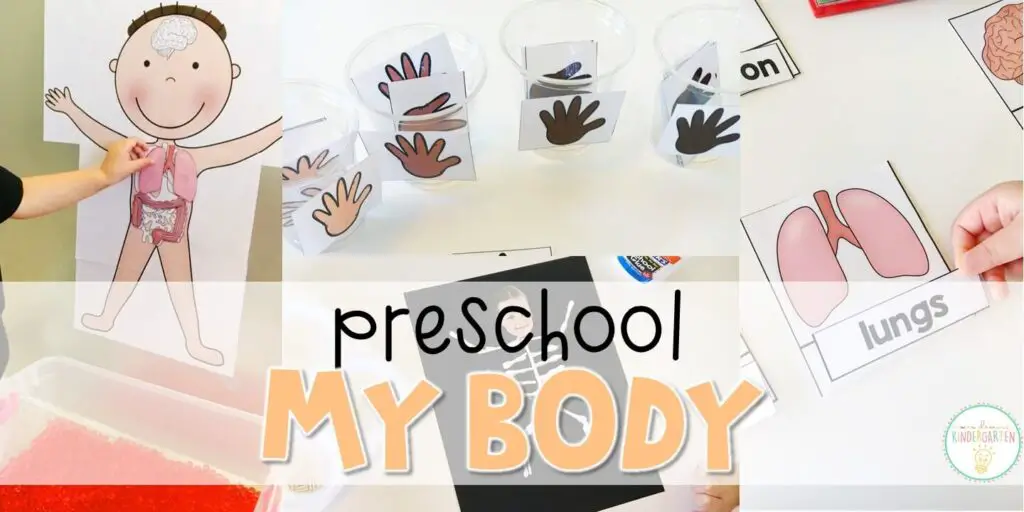
Labeling activities are a brilliant technique to help children distinguish and name different parts of their bodies. Children must be able to identify their own body parts in order to communicate with you if something is wrong by pointing to them or by using a specific term.
Materials for this activity:
- Post-it Notes or sticker paper
- Marker
Start by listing each body part’s name on a post-it note. Using sticker paper is another option. Names can be printed or written on them. You might want to choose just the areas of the body that are visible to children. If you opt to use sticker papers, let the kids assist you in cutting the labels so they may practice their fine motor skills.
Once the labels are ready, have the kids stick them to the correct parts of their bodies. As these are basic sight words, this is a splendid opportunity to teach word recognition and basic reading. So, read each word out loud to the youngsters before having them post it on their bodies.
Check out more labeling activities on MrsPlemonsKindergarten.com
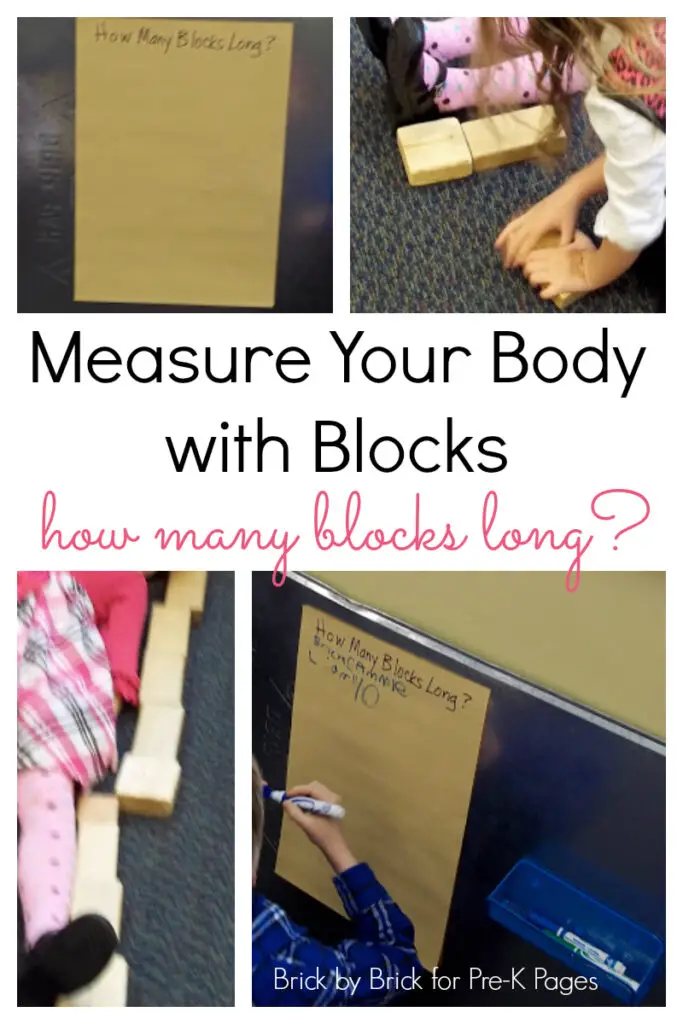
Use blocks to develop children’s math and measurement skills. This activity will build their counting skills, expand their vocabulary, and sharpen their analytical abilities as they compare which body parts they measure using more or fewer blocks. Understanding these basic concepts will develop their comprehension of complex math problems they will encounter later on.
Tell the kids that they are going to measure their body length by counting the number of blocks in the row. Request that they take turns lying on the floor. Others will create a line of blocks that is the same length as the one lying down. When the line is formed, children can count how many blocks were used.
Prepare a chart where students can write the child’s name and the number of blocks used.
For variation, children can measure specific body parts of their classmates or family members (e.g. leg, foot, arm, etc.).
Materials for the activity:
- Blocks
- Chart
- Marker
For more fun ideas, visit Pre-kPages.com
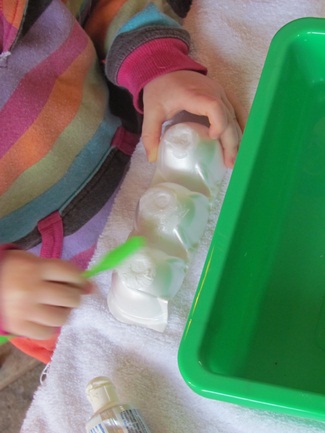
Preschool years are the optimal period for children to develop functional literacy and one simple way to do this is to educate them on taking care of their teeth. Children learn through play. So, why not set up a pretend play toothbrushing station?
Toothbrushing activities provide ample opportunities for kids to practice good oral hygiene. Showing them how to squeeze the right amount of toothpaste and practicing the right brushing strokes can improve their hand control and fine motor skills. Just keep an eye on kids who might want to eat the toothpaste.
To make the activity more authentic, try dabbing a touch of paint into the giant faux teeth for kids to brush off.
As this is a skill that will ultimately be useful to them, children are able to openly talk about teeth cleaning, brushing, rinsing, plaque, and so on. You’ll be amused at what these tiny humans can share!
Materials:
- Toothpaste
- Toothbrushes
- Water
- Cups
- Towels
- Egg cartons
- Colored paint for stain (optional)
Get more details of the activity on TeachPreschool.org
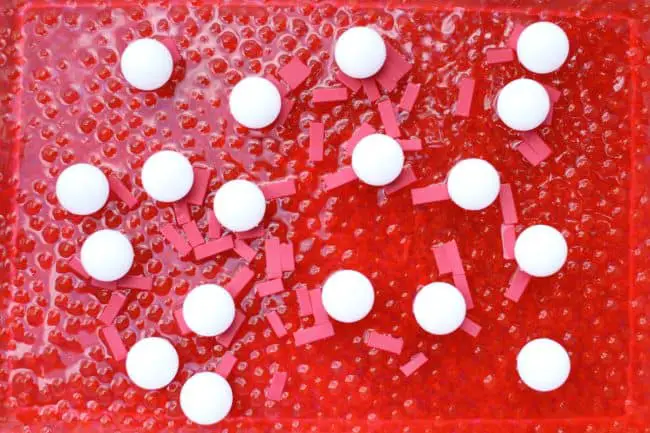
Blood is essential to keeping us alive. Oxygen and nutrients are circulated around the body through the blood. This activity will introduce children to the four different components of blood and give them a fun way to visualize its properties. This will also be a good avenue to discuss healthy habits to keep our blood flowing and organs healthy.
The sight of blood can cause anxiety in kids, especially when it comes from wounds. But one way to ease their fear of blood is through this activity.
Sensory play promotes learning as it encourages exploration, curiosity, problem-solving, and creativity. It supports the development of language and motor skills and aids in the formation of neural connections in the brain.
Begin by gathering the materials needed:
- A large plastic container (or sensory tub)
- Red water beads
- Ping-pong balls
- Water
- Red craft foam
Blood is composed of red blood cells, white blood cells, platelets, and plasma and they can be symbolized by the red water beads, ping-pong balls, craft foam pieces, and water, respectively.
Make sure to prepare simple explanations as these can be overwhelming for the kids.
For more information about this activity, check out ICanTeachMyChild.com
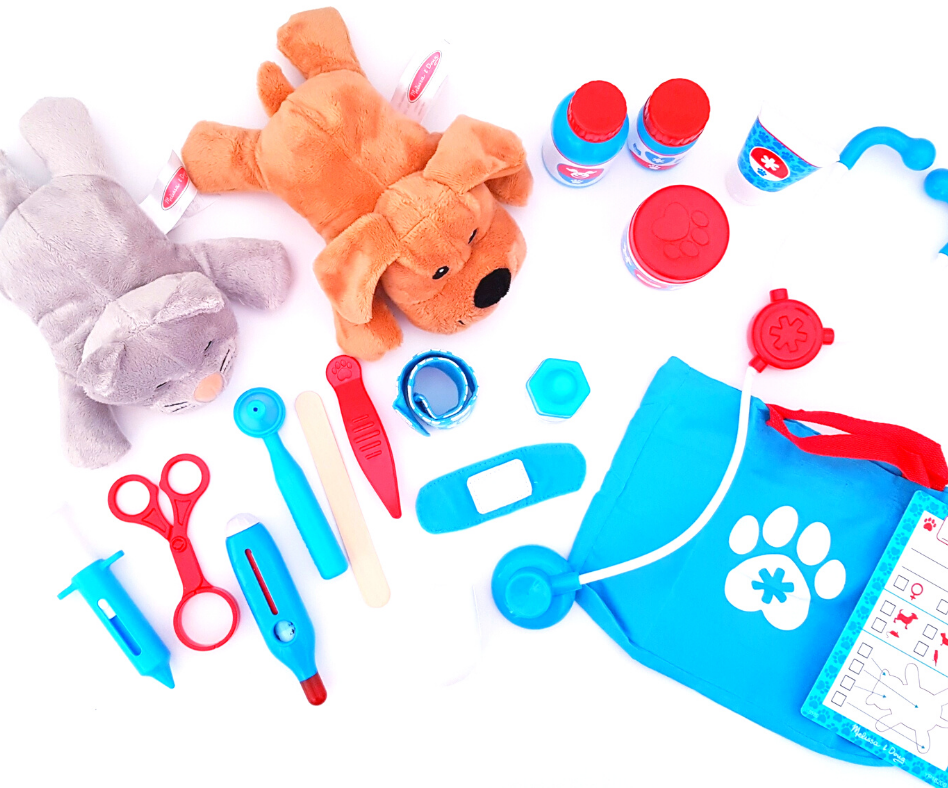
Play along by bringing your very own fictitious sick animal to your kid’s veterinary clinic. They’ll surely enjoy it! The advantages of imaginative play for learning are immense.
Build children’s language skills and vocabulary by teaching them common terminologies used by Veterinarians.
Foster their creativity by giving kids control over the direction of the dramatic play themselves, coming up with solutions to make-believe problems and situations they are presented with.
Develop their empathy by letting them talk openly about their emotions as they deal with pretend owners and heal pretend sick pets.
Learn a variety of math skills, such as how to handle money, calculate treatment dosages, and think about the days of the week and appointment times.
Materials:
- Examination/Operating Table (plastic tray or a tabletop)
- Vet equipment (thermometer, syringe, bandages, pretend tubs & tubes of ointments & medicines, scissors, tweezers, stethoscope, plaster cast, ear scope & a magnifying glass
- Toy pets
- Vet outfit
- X-Rays (you can use photos from Google on the TV screen)
- Weighing scales
- Food bowls
- Pencils
- Phone
- Cash register
- Pretend money
For a more elaborate and detailed discussion, visit LearningPuddles.com
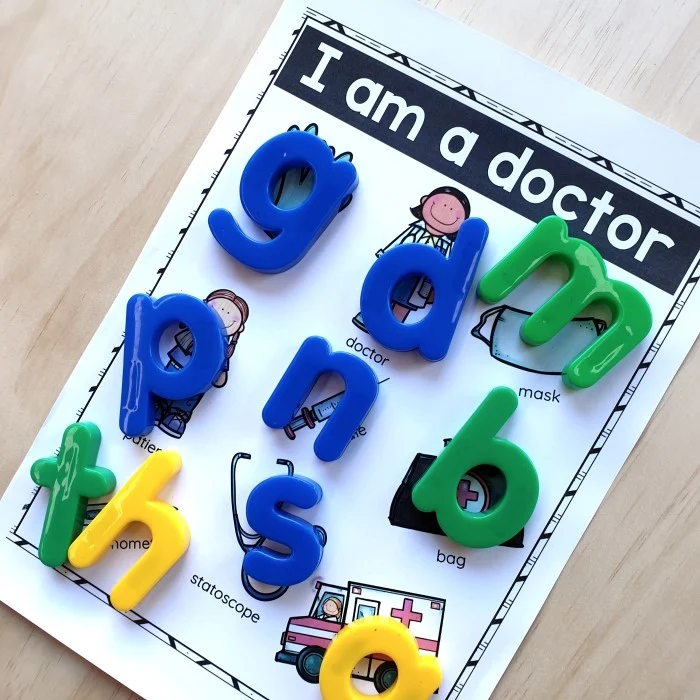
The sight of a medical facility or even the idea of going to one can be terrifying for kids. Images of bright lights, white coats, syringe shots, and being forced to stay still for longer periods of time – are some of the thoughts that kids might be able to associate with their trips to hospitals or clinics.
Now they can get rid of those frightening thoughts.
By engaging them with the series of activities outlined above, plus this pack of doctor play printables, children will no doubt change their unfavorable perceptions of visiting a doctor.
The “I am a Doctor” printable set has a wide variety of engaging learning activities that will inspire preschoolers to maintain good oral hygiene, stress the value of being on time, and make the next trip to the doctor less frightening while developing critical cognitive abilities and knowledge.
Kids will have fun while learning. Thanks to the printable kit’s use of realistic clipart and photographs.
The activities range from letter association, forming puzzles, tracing, paring, sorting, learning about time, sequencing, matching, and so much more.
This fantastic collection of preschool printables is available at MontessoriNature.com. Make sure to check them out.
Conclusion
To say that pretend play is beneficial to preschoolers is an understatement. It is during these activities that children’s cognitive, psychomotor, emotional, and social aptitudes are molded. The doctor activities listed here are great ways to help kids become familiar and comfortable with doctors, equipment, and vocabulary they might hear at a doctor’s office visit. Plus, these activities might just inspire the next generation of medical professionals.
Development of these facets during childhood prepares them to carry out tasks that are required in daily life. Thank you for checking out these activities. Happy teaching!


